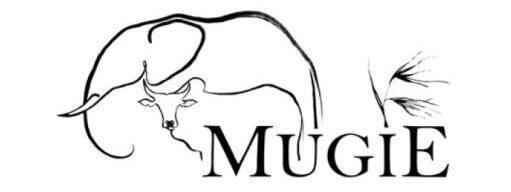The Mugie Ecosystem
The Conservancy
Mugie Conservancy is a thriving sanctuary known for its ancient African Olive forests, diverse wildlife, and rich ecosystem services. This unique landscape not only offers a haven for a variety of species but also plays a critical role in sustaining both wildlife and human communities.
The altitude ranges from 1,800m to 2,000m above sea level, sloping northwest to southeast. The landscape varies from vast open plains in the east, dotted with iconic acacia and albida trees, to the southern slopes of the Lorogi plateau in the northwest, with large groves of olea, euclea, and croton trees in between.
Several seasonal streams cross the property, draining to the southeast through the Ol Keju Losera and Lera drainage systems. Mugie boasts numerous natural perennial springs and nine man-made impoundments, with the largest holding 1.3 million cubic meters of water.
The mean daily temperature is 28°C, while the mean night temperature is 13°C. The average annual precipitation is 601.5 mm. The geology of the conservancy features top clay, sandy volcanic soils with considerable murram, and dark grey fissile phonolites.
The Mugie Ecosystem:
A Complex Tapestry of Habitats
Mugie’s landscapes are diverse, ranging from the majestic African Olive (Olea europaea cuspidata) forests to high-altitude woodlands. These forests, some of which are over 811 years old, are not just ecological treasures but have deep cultural significance. Historically, they were revered in local traditions, used in age-set ceremonies, and seen as purifiers of gourds. Today, these forests continue to provide invaluable ecosystem services, supporting local communities, wildlife, and the region’s economy.
Biodiversity & Ecosystem Services
1. Wildlife and Flora Diversity
Mugie’s varied habitats make it a prime location for a wide array of wildlife and plant species. The conservancy is home to four endangered mammal species and eight critically endangered or endangered bird species, as per the IUCN Red List.
Notable species include:
- Big Cats: Lion, Leopard, Cheetah, Caracal
- Elephant and Buffalo: Iconic African wildlife
- Endangered Birds: Breeding sites for the Grey Crowned Crane
- The Mugie Five: Beisa Oryx, Lelwel Hartebeest, Striped Hyena, Grevy’s Zebra, Reticulated Giraffe
With over 52 mammal species and 303 bird species recorded, Mugie supports both resident and migratory wildlife, making it an important biodiversity hotspot.
2. Ecosystem Services
- Water Provision:
Mugie serves as a critical water tower for the region. The Mugie landscape regulates the water flow of the Ol Keju Losera River, feeding into the Ewaso Nyiro watershed. Several springs and dams, including the 63ha Mugie Dam, store 1.35 million cubic meters of water, providing for both wildlife and livestock throughout the year. The water also supports local irrigation and agricultural activities. Pollination:
Mugie’s woodlands and wildflower habitats support vital pollinators, especially bees, which contribute to the region’s honey production. This enhances the overall ecosystem, benefiting local agriculture and contributing to the area’s distinct flavors and products.

